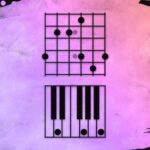Build Your Skills
Learn music theory Train your ears Track your tempoRead Now
Get the Newsletter
Categories
- | BeatMirror (10)
- | HearEQ (11)
- | Waay (23)
- | WaayFinder (1)
- Audio (16)
- For musicians (34)
- Guitar (2)
- Music theory (15)
- News (43)
- Startup stories (2)
- Tutorial (4)
Keep in Touch
About Ten Kettles
We love music, we love learning, and we love building brand new things. We are Ten Kettles.
Read more >-
November 2, 2020
Three Steps to Songwriting Superpowers
There’s a moment when you know a song is finished. Where you step back and say, “it’s done.” Sometimes you place a little mental asterisk beside it (*for now…), but there’s still a sense of completion, of release. This song is now ready. For performance, for recording, for whatever you want to do.
But where did that song come from? How did you do it? Let’s press rewind and see how that song was written.
Story of a song
Maybe it started with a melody you were humming in the shower, one that just came to you. Then you poked around to find the notes on a piano, and found some chords to fit. Your melody and chords sounded like a verse to you, so you wrote lyrics and learned the chords on your guitar. It sounded great! But then you started on the chorus… and nothing seemed to fit.
You put the song aside.
The next week a random song came on the radio and you were struck by something in the chorus. You searched for the chords online and found that the song changed from minor to major. Neat! So you tried a major progression for your chorus and it fit perfectly. Exactly what the song needed.
You finished up the lyrics, put together a song structure, and then played the song through a few times. After a couple tweaks and some more run-throughs, you finally declared: “It’s done.”
Three steps
There are many ways a song can come together, but there will always be two ingredients: the inspired and the intentional. Like humming a melody in the shower, the music can sometimes come to us in a burst of inspiration. But other times, we write with more intention: like figuring out the key of your melody and the chords to match. Being able to move freely across this spectrum—grasping inspiration when it strikes but applying our theory skills when needed—gives songwriters like us a sort of superpower.
There will always be two ingredients to songwriting: the inspired and the intentional
How do we build this superpower? We do three things.
First, we write music. Using whatever skills we have, we draw out the music and story we’ve got inside and give it musical form. Maybe it’s hard, maybe we don’t really know what we’re doing, but we see it through. We write. This builds our momentum as a songwriter and is the best possible starting point for any aspiring songwriter, regardless of skill level.
Second, we build our inspiration. How? We listen to music. The songs we write might sound nothing like our favourite tunes, at least not on the surface. But practicing that love of listening—practicing being inspired and excited by music—it can fill up our “inspiration tank” ready for our next writing attempt.
Third, we build concrete songwriting skills. What notes sound good together? How do we write a chord progression? What are the principles of a good song structure? Think of music theory as a big map that shows you how to get to a bunch of cool places. You don’t always need to stick to the roads, but it can be helpful to know where they are.
Think of music theory as a big map. You don’t always need to stick to the roads, but it can be helpful to know where they are.
The cycle
These three things—writing, listening, and skill development—are an endless, wonderful cycle. Each step feeds the others. By moving between them we are in a constant state of building inspiration, useful skills, and most importantly: more music.
That’s how we build our songwriting superpowers. So go write your own music, fall in love with someone else’s, learn to navigate the world of music theory (Waay would be honoured to be your guide), and then write some more!



Comments